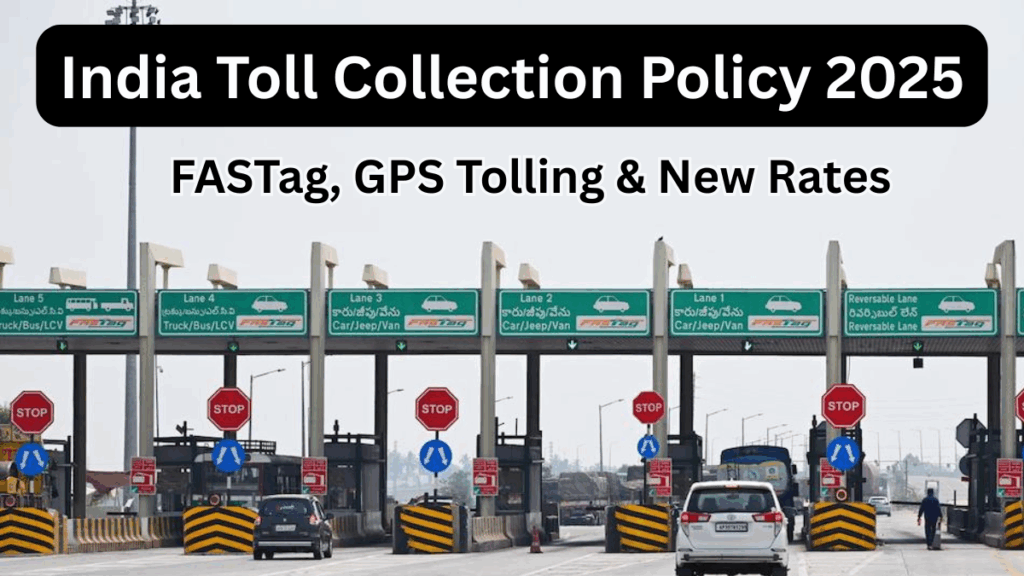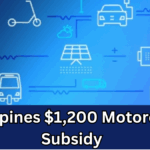India is set to overhaul its toll collection system with a futuristic, digital-first approach. The India Toll Collection Policy 2025 Reform brings significant updates to FASTag 2025, a shift toward GPS-based tolling, and new dynamic pricing strategies through NHAI road pricing. Here’s what every road user needs to know.

Key Highlights of the 2025 Toll Collection Reform
-
Nationwide adoption of digital toll collection led by the National Highways Authority of India (NHAI)
-
Mandatory implementation of upgraded FASTag 2025
-
Pilot phase of GPS-based tolling on selected highways
-
New dynamic toll charges under the new toll policy
-
A goal of eliminating physical toll booths for seamless traffic flow
FASTag 2025 – What’s New?
The new policy strengthens FASTag enforcement. While FASTag was introduced a few years ago, FASTag 2025 aims to make it more reliable, secure, and mandatory across all categories of vehicles.
Key Features of FASTag 2025
| Feature | Current System | FASTag 2025 Enhancements |
|---|---|---|
| Compliance Level | Moderate | Strict enforcement |
| Penalties for Non-Usage | ₹100–500 | ₹1,000 and lane access restriction |
| Recharge & Access | Bank or wallet-specific | Unified recharge via NHAI app |
| Tech Used | RFID only | RFID + GPS-enabled integration |
With these upgrades, road users are encouraged to replace old tags and switch to the improved version.
GPS-Based Toll Collection – How It Works
The government is testing GPS tolling technology, which calculates toll charges based on the actual distance traveled, rather than fixed rates at toll plazas. This move will eventually replace physical toll booths.
Benefits of GPS Tolling
-
Charges based on kilometers covered
-
No need to stop or slow down at toll plazas
-
Decreased fuel usage and emissions
-
Transparent and digital NHAI road pricing
New Toll Policy – Changes in Toll Rates
The new toll policy takes a more tailored approach to pricing, adjusting rates depending on road quality, vehicle type, and route usage. The aim is to improve fairness and optimize maintenance revenues.
Revised Toll Rates Overview
| Type of Road | Current Rate (Per km) | Expected New Rate (2025) |
|---|---|---|
| National Highways (4/6-lane) | ₹1.50 – ₹2.00 | ₹2.50 – ₹3.00 |
| Urban Expressways | ₹2.00 – ₹2.50 | ₹3.50 – ₹4.00 |
| Rural or Low-Traffic Roads | ₹0.75 – ₹1.00 | Minimal or no increase expected |
These rate changes are part of the broader India Toll Collection Policy 2025 Reform, aiming to balance road usage and cost recovery.
What Should Drivers Do Now?
To adapt to the evolving toll infrastructure, road users should take the following steps:
-
Replace outdated FASTags with FASTag 2025-compatible tags
-
Keep your NHAI mobile app updated to receive new toll policy alerts
-
Follow official NHAI channels to monitor NHAI road pricing changes
-
Prepare for the gradual rollout of GPS-based tolling on major expressways
FAQs
What is the deadline to switch to FASTag 2025?
The official rollout of FASTag 2025 begins in phases starting January 2025, with full enforcement by mid-year. Non-compliant vehicles may be penalized or denied highway access.
How does GPS tolling affect current FASTag users?
During the transition phase, GPS tolling will work in tandem with FASTag 2025. Eventually, GPS may replace RFID altogether for long-distance routes.
Will tolls become more expensive under the new toll policy?
In some cases, yes. The new toll policy allows price adjustments based on road quality and location. Urban expressways and high-demand routes may see increased rates.
How can I track toll charges and avoid overpaying?
Install the official NHAI FASTag app or portal, which will provide live toll tracking, billing details, and NHAI road pricing updates specific to your route and distance.
Click here to learn more
Pari is a passionate writer known for captivating stories that blend imagination and reality. Inspired by travel, history, and everyday moments, Pari crafts narratives that resonate deeply with readers.

